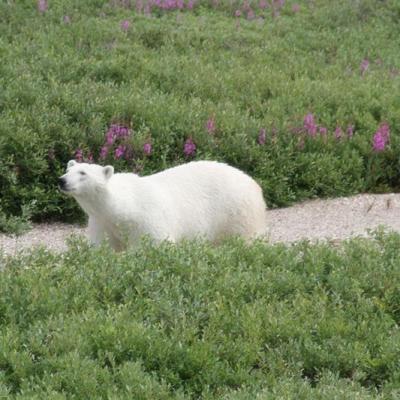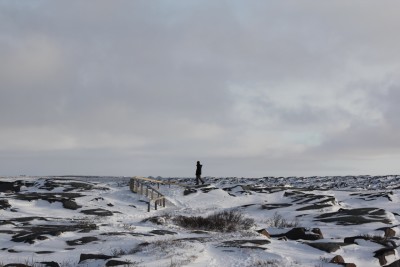Cape Merry has a wealth of history and natural beauty. It was once called Knight's Round Point, as befits the land bounded by the Hudson Bay and the Churchill River. James Knight sailed into the mouth of the Churchill River to begin construction of a fur trading post for the Hudson's Bay Company in 1717. The cape was later renamed to honour Captain John Merry, who was the Deputy Governor of the Hudson's Bay Company from 1712-18. In 1686 John Abraham was the first Hudson's Bay Company employee to come to this area. He recommended that a trading post be established on the Churchill River. A wooden post was built on the western shore, 8 km upriver in 1689, but it burned to the ground the same year. Henry Kelsey was involved with the construction of that post and made two journeys of discovery inland: north beyond Churchill and south as far as the prairies. James Knight arrived in 1717 and supervised construction of Fort Churchill upon the remains of the first post.
Photo: Michael Furdyk
Save to Foursquare















